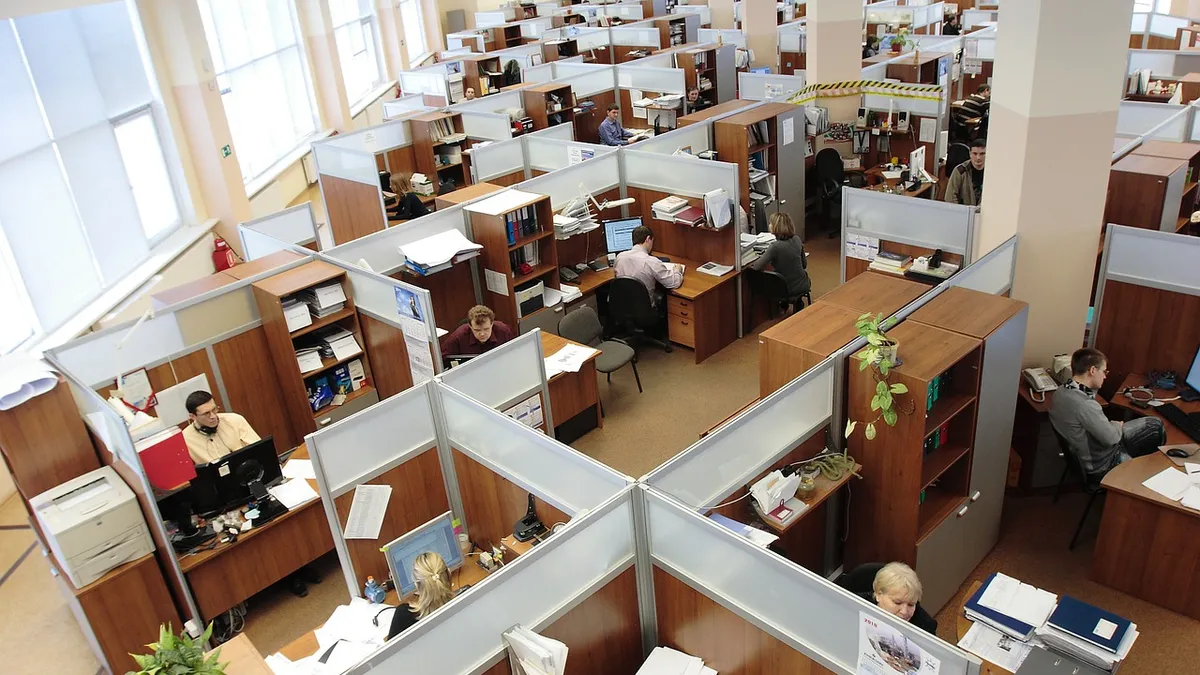Bringing back employees too early after coronavirus-related office lockdowns lift may put you at legal risk. Plaintiff lawyers will be looking to test the tort waters with employees who get sick upon their return, according to Lathrop GPM partner Mara Cohara.
The ordinary path for handling an employee claim of harmful exposure on the job is worker's compensation. But the return of employees to the office after months of remote work is the kind of event that will spark a rise in lawsuits, Cohara told CFO Dive.
“Whether or not you have an actual duty, creative plaintiff attorneys are going to look for angles to go outside workers comp, and try to go into the company's deeper pockets,” said Cohara, whose practice focuses on tort law.
Plaintiff lawyers will face a steep hurdle winning in court because of the difficulty in proving an employee's exposure to COVID-19 happened at the workplace, but companies will still face big costs mounting a defense.
"It’s really hard to prove," she said. "Because once you start doing an investigation into a claim, you see this person go to Walmart or Target, or they have kids or immediate family members who are essential workers."
Even so, she added, "sometimes it's better to buy your peace rather than completely litigate the matter. If you win at trial or on a motion, you’re still having to spend the money."
Phased return
Organizations have a financial incentive to bring people back in quickly, starting with those whose work requires them to be on-site, to begin to recover lost productivity.
But even for those who can work at home, it's not an efficient use of funds to pay for office space when no one's using it. And landlords, arguing they bear no responsibility for your office space sitting empty, are unlikely to make concessions on rent.
For that reason, avoid the temptation to rush everyone back in, said Cohara. Instead, take a phased approach in which you start with those who can only work on-site and only later bring in others. "A lot of people can work from home for a long period of time," she said.
To prepare your workspace for your employees' return, familiarize yourself with the latest guidelines from the Center for Disease Control and your local health agency and then take the following steps:
- Prepare your space by having the HVAC inspected, since it's involved in air circulation, and revising your cleaning plans to include wipe-downs with a sanitizing cleaner.
- Have personal protective equipment like masks and gloves available for each employee and, if health guidelines require it, have a protocol in place for checking people's temperature.
- Distribute hand sanitizer throughout the office.
- If yours is an open floor plan, look for ways to give each person additional space to maintain social distance between them and their coworkers. "The big thing is going to be decreasing density," she said.
- Limit the number of people who can congregate in break rooms, supply closets, and meeting rooms. "Gone are the days you’re going to have a packed conference room, at least for a while," she said.
- If your office has open access, close it. "You want to make sure you know who's coming in and when," she said.
- Lastly, document everything you're doing that complies with CDC and local health agency guidelines.
"It’s going to be a very different environment," she said.











